Tobias Wolters started his journey in the world of visual effects nearly a decade ago. His portfolio includes work on projects like The Wilds, Midnight at the Pera Palace, and the inaugural season of The Rings of Power.
Max Serges made his debut in the VFX industry with the movie Occupation: Rainfall, followed by his work on the Netflix series Midnight at the Pera Palace.
Beginning his visual effects journey in 2015 at Framestore, Will Reece has since worked on multiple shows, including The Kid Who Would Be King, The Letter For The King, the first two seasons of The Witcher, and Masters of the Air.
What is your background?
Tobias Wolters // I’ve always been passionate about film, starting with making stop-motion films using Lego when I was 14 years old. These early projects eventually evolved into feature-length action films starring all my school friends. I learned how to use After Effects, Maya, FumeFX, and how to build miniatures and film explosion elements—much to the concern of our parents. That got some attention and suddenly I was able to work on films for money. Fourteen years later, I’m proud to say I’ve had the opportunity to work on some fantastic projects and learn from incredibly talented people.
Max Serges // Before working as a VFX Producer, I was a Development Producer in TV. It turned out to be super helpful since you often have to think outside the box and come up with different creative solutions quickly. In development, you’re constantly brainstorming and finding new angles, which is a skill that directly translates to managing complex VFX projects, where flexibility and innovation are key.
How did you get involved on this series?
Tobias Wolters // After we finished Season 1 of The Rings of Power, I was scheduled to travel to the UK for the second season. However, our producer Ron Ames approached me with an incredible opportunity – to lead VFX for Taika and Jemaine’s Time Bandits. It was a tough decision, but the chance to create so many worlds with these fantastic filmmakers, and to work with miniatures and even oil paintings again, was something I simply couldn’t pass up.
Max Serges // Toby got me involved in Time Bandits from the start; we previously worked together on some features and a Netflix series we shot in Istanbul.
Will Reece // Toby gave me a call whilst I was on holiday in NZ after completing shooting for Masters of the Air in the UK. He mentioned the project, I said I’d love help out for a bit and have now been in NZ for 2.5years! – still waiting for my holiday…haha.
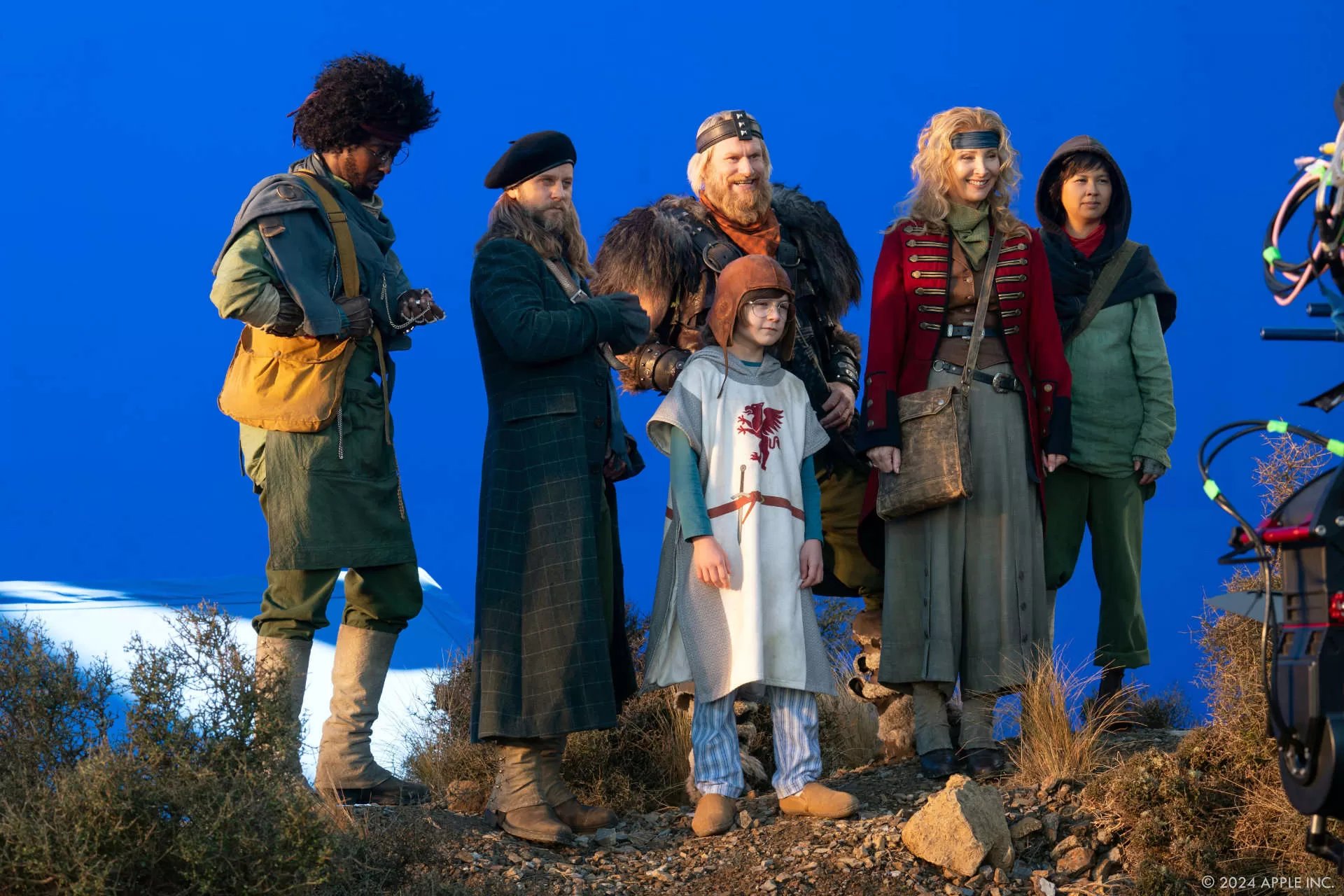
How was the collaboration with the showrunners and directors?
Tobias Wolters // The collaboration was truly wonderful on this project. We had to work very closely together with the showrunners and directors since a lot of the scenes dependent heavy on VFX or were shot on a virtual production set. We’re all film makers at heart and really focus on story first. Having this mindset, really gave us the trust early on and dissolved a lot of the boundaries. As a result of this, we took care of the show’s story boards, and cut previz for scenes to help communicate and plan the vision, or bring alternative options for scenes that were initially a bit too large on the page.
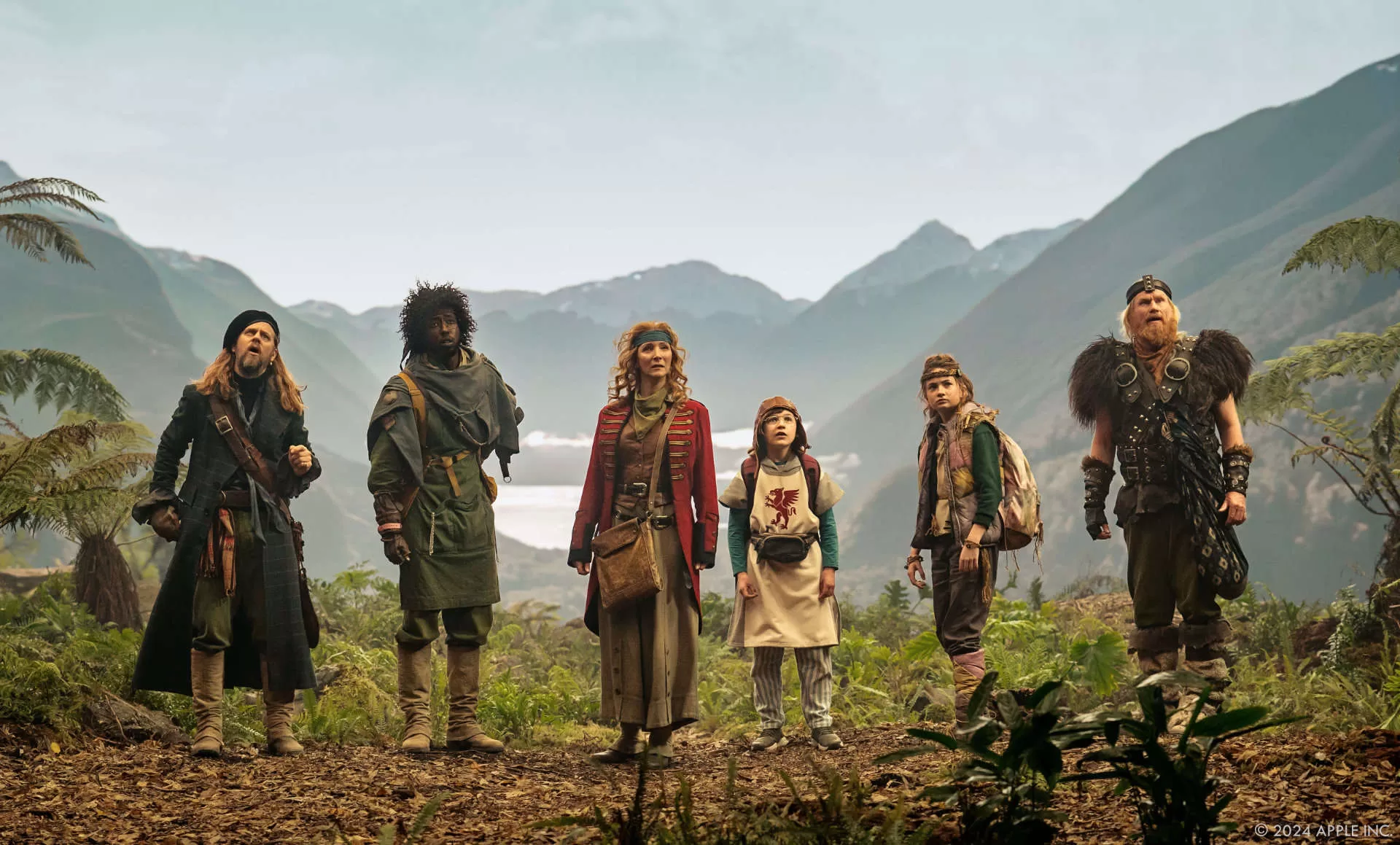
How did you organize the work between you?
Will Reece // Producing large scale episodic is at best of times hectic. On a project of this scale with so many stand-alone worlds and such a large virtual production element we knew the workload would be too much for a single producer. We didn’t want to divide the work traditionally across virtual production and VFX as we felt this would be counterproductive to an approach that Toby, Max and I were adamant needed to be creative driven. We also know that handling virtual production with an end-to-end structure offers huge efficiencies. Thankfully we all approach creative problems with the same mindset of never wanting time or money to stop a good idea, so our production instincts were almost always the same. This meant on a practical level a lot of work was shared and handed off between us (often multiple times a day!) from helping plan and design with creative teams on the next shooting block to helping cover the shooting day to reworking heavy vfx sequences with editorial to the endless game of budget Tetris and everything between. This collaboration extended beyond the production side team and across to our vendor partners who all took to the challenge and really came onboard to offer fantastic execution solutions.
Max Serges // We complement each other well, each bringing our strengths to the table. We always made big decisions together, taking it one step at a time to ensure everyone was aligned. Then, the path forward was clear, and everyone knew their role. This approach made the process much more streamlined and efficient. From a producing perspective, it allowed us to focus on the logistics, schedule, and budget confidently, knowing that the creative vision was solid. It also promoted a strong sense of trust and collaboration, which was essential for navigating the complexities of the project.

Which vendors did you work with and how did you work together to create the final look?
Max Serges // We worked with nine vendors, including Rodeo FX, DNEG, ILM, Distillery VFX, Platige Image, Cause and FX, Leitmotif, Bot VFX, and ReDefine. We carefully selected the team for this show, collaborating closely with our VFX vendors to ensure we had the right fit for the project. Before diving into the work, we always provided an overview, giving each vendor the opportunity to come back to us with their preferences and assemble a team that aligned perfectly with our needs. Ownership was vital for us, so we encouraged vendors to take the lead within their areas of expertise. And all of the teams did an outstanding job! From our team of vendor VFX Supervisors, Producers and Coordinators to the PA’s who keep us alive.
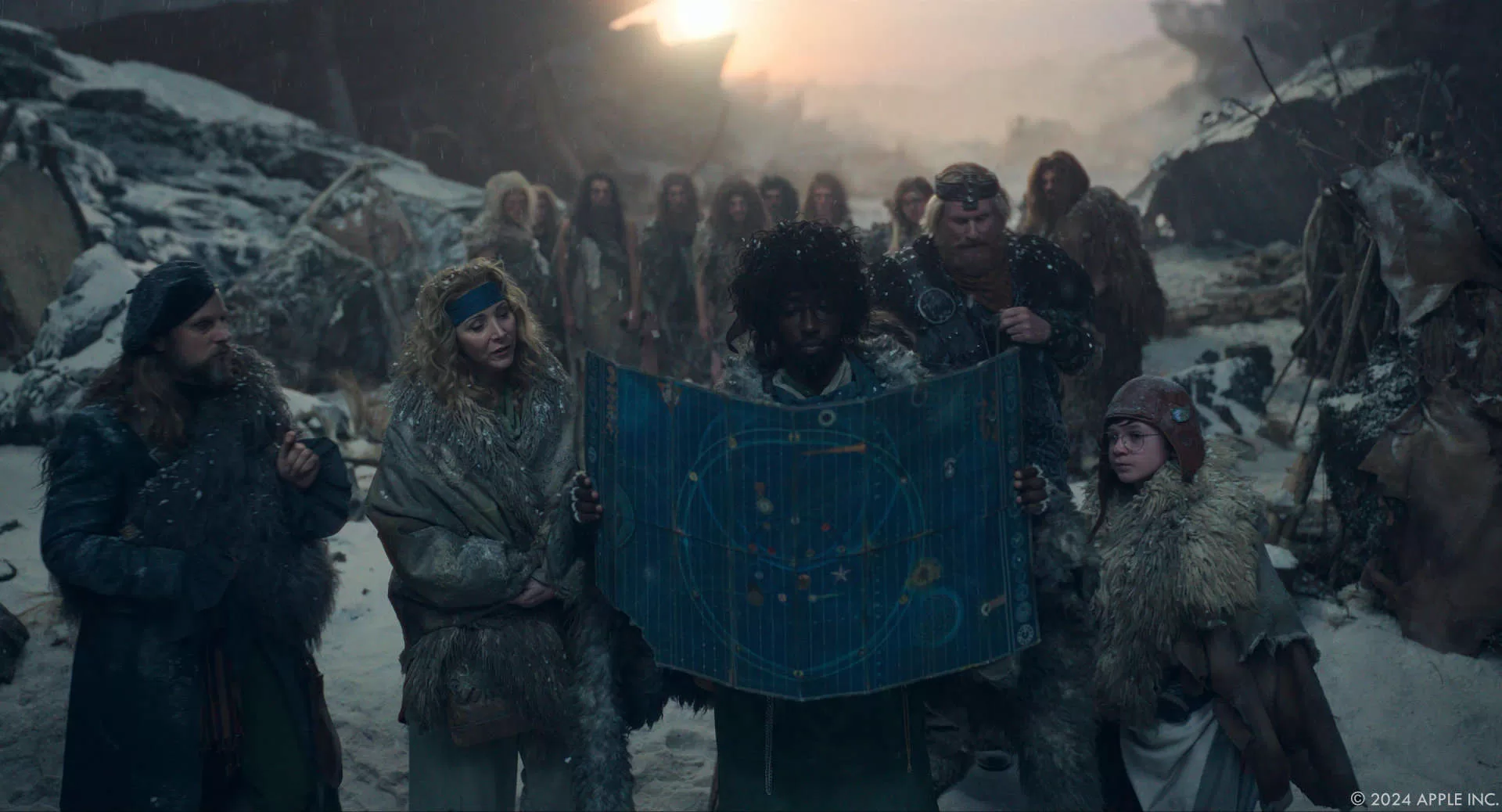
What is the your role on set and how do you work with other departments?
Tobias Wolters // Since we had a strong virtual production element, we had to work closely together with all departments from day one. We were designing sets together with the art department, replicated props for the volume stage. We had to schedule the shoot and turnaround for the volume stage together with the AD-department. We tested elaborate camera moves with the camera department before we felt comfortable executing these on the volume stage. The lighting department helped us to prelight the physical sets on the volume so we had enough time to integrate our digital extensions. Everyone had to come together on this one. I don’t think we would have been able to achieve this production if we hadn’t had this strong collaboration. When it came to the shoot, you’re pretty much just running around, making last minute adjustments to the volume content or set lighting, and making sure you have three back up plans ready to go at any moment if something goes wrong. But then we had to prepare the shoot of the next episodes, and hand over the previous episode to the VFX vendors. We also had a miniatures unit that we directed, and a little VFX elements unit.
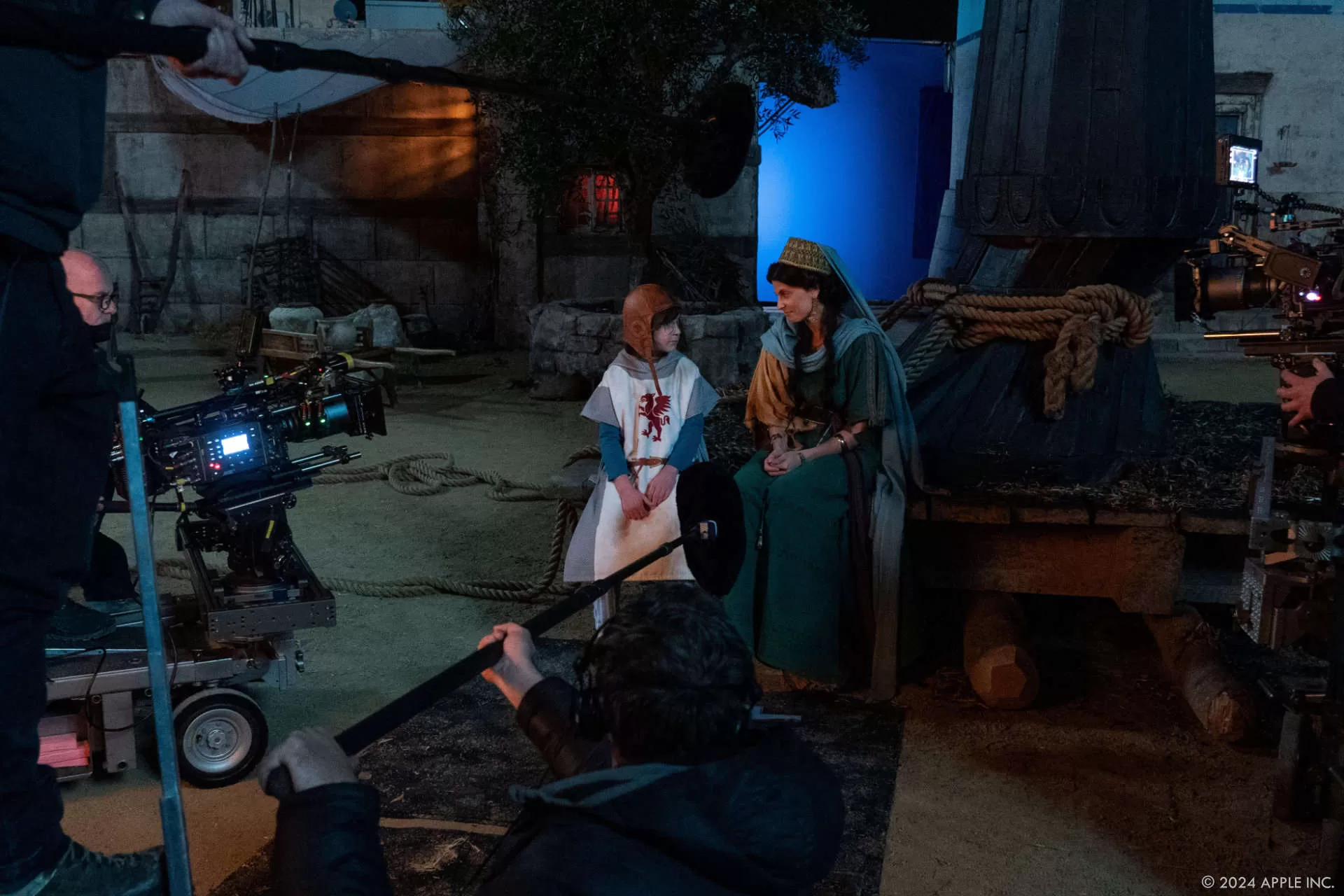
How did the visual effects team collaborate with other departments, such as set design and costuming?
Tobias Wolters // For mostly practical sets, we start with conversations around scale and lighting. Do we want to build the set for the volume, or should it be a larger build on a stage on blue screen, location, or backlot? The answer mostly comes down to schedule, logistics, and lighting. The ship in episode 1 was originally thought to be a volume set – however, I felt we would lose a lot of the harsh elements and realism by doing so. We wanted to feel the wind, the mist, and use a lot of practical effects such as a big gimbal for movement of the boat and explosions. So this became a big set.
Max Serges // When you decide to use Virtual Production, the lines between departments merge in many ways. We initially spent a lot of time explaining the technology to everyone, as it can be overwhelming if you’ve never worked on an LED stage before. There are lots of new technical terms to understand, things that work well, and things to avoid. We walked everyone through the process, ensuring every department was comfortable with the tech and on the same page.
The Art Department became our biggest ally, working closely with the VFX Team. We needed to start building the virtual environments even before the physical sets were constructed, ensuring they would blend seamlessly with the virtual environments displayed on the LED screens to create the perfect illusion. The collaboration went beyond traditional boundaries; Art, SFX, Greens, Lighting, Grips, and Rigging became part of the Virtual Production Team. A great example is the Ice Age environment. SFX played a crucial role in creating large amounts of snow that needed to interact with the virtual environment, adding a tactile element that made the scene more immersive.
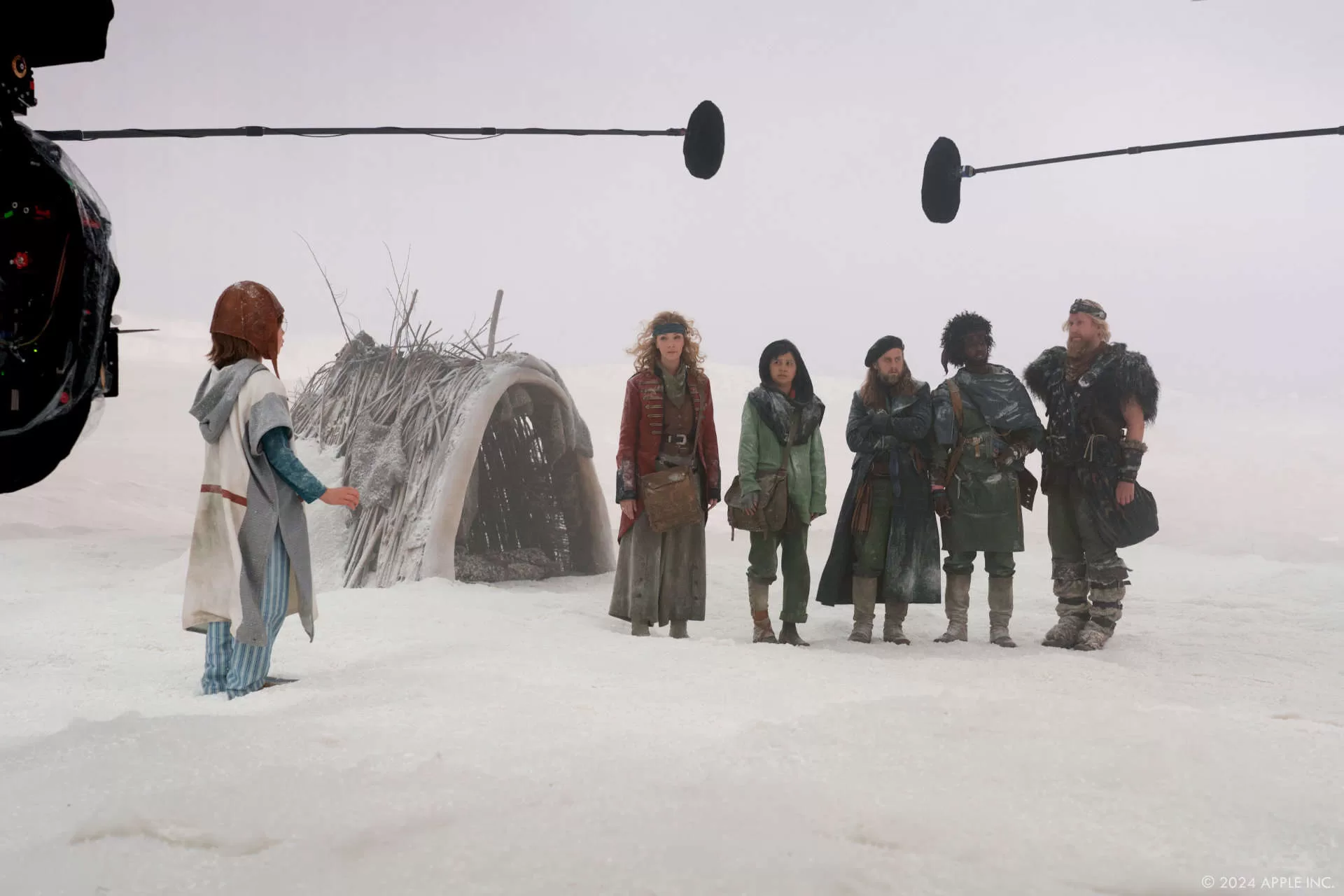
Can you describe the process of integrating CGI with practical effects?
Tobias Wolters // We always try to mix things up and not use the same technique all the time. That’s when it becomes obvious. In pre-production we started by filming location plates in the South Island of New Zealand to create a big library of landscape elements, aerial establishers and references. Our mantra was to not just have fully synthetic shots but always a plate we could fall back on, even if it was just reference. We built miniatures to have physical elements available that could be digitalized and as assets on the volume.
Max Serges // It’s all about the right balance, especially on heavier VFX sequences. We always start with tons of references that we collect in mood boards. Step by step, we pick elements that we can shoot in some shape or form. So, we identified practical elements that we could shoot in camera and created previz to map out how everything plays together. Together with the Art Department and SFX, we carefully integrated these elements so we could add the CG on top to match our practical FX. An excellent example of that is the Wardrobe in Kevin’s Bedroom. We built a miniature version and had a miniature Supreme Being head blast through it. That was a great shoot. In post, we had good references, built the CG on top of that, and added the final touch in composition to achieve a seamless blend.

What was the process of creating the time travel effects, and how did they differ from other visual elements?
Tobias Wolters // The time travel effects were a big question mark for every department, and nobody seemed to have the perfect answer. The breakthrough came when we looked at physically melting the fabric of the 2 separate worlds together. In prep we tried various melting techniques with wax to see how that would behave. This then became a style guide for exploring the time portal concepts. When dealing with something abstract and fantastical, I always try to find anchors in something real. For the portals it was the behaviour and feel of molten wax, the lighting from the ‘other, portal side, and the colour palette of the environment.
How did you ensure consistency in the visual style across different historical periods and fantasy settings?
Tobias Wolters // The various periods and times we visited had to be consistent and coherent in itself, not so much overall. Each world has its own unique atmosphere. Our approach in prep was to create a world building ‘bible’ for each world. We had some fantastic concept artists and previz teams working on visualising set builds together with our extensions and making out all the building blocks of the world. We would collaborate with all the other departments to achieve this together and inform each other.
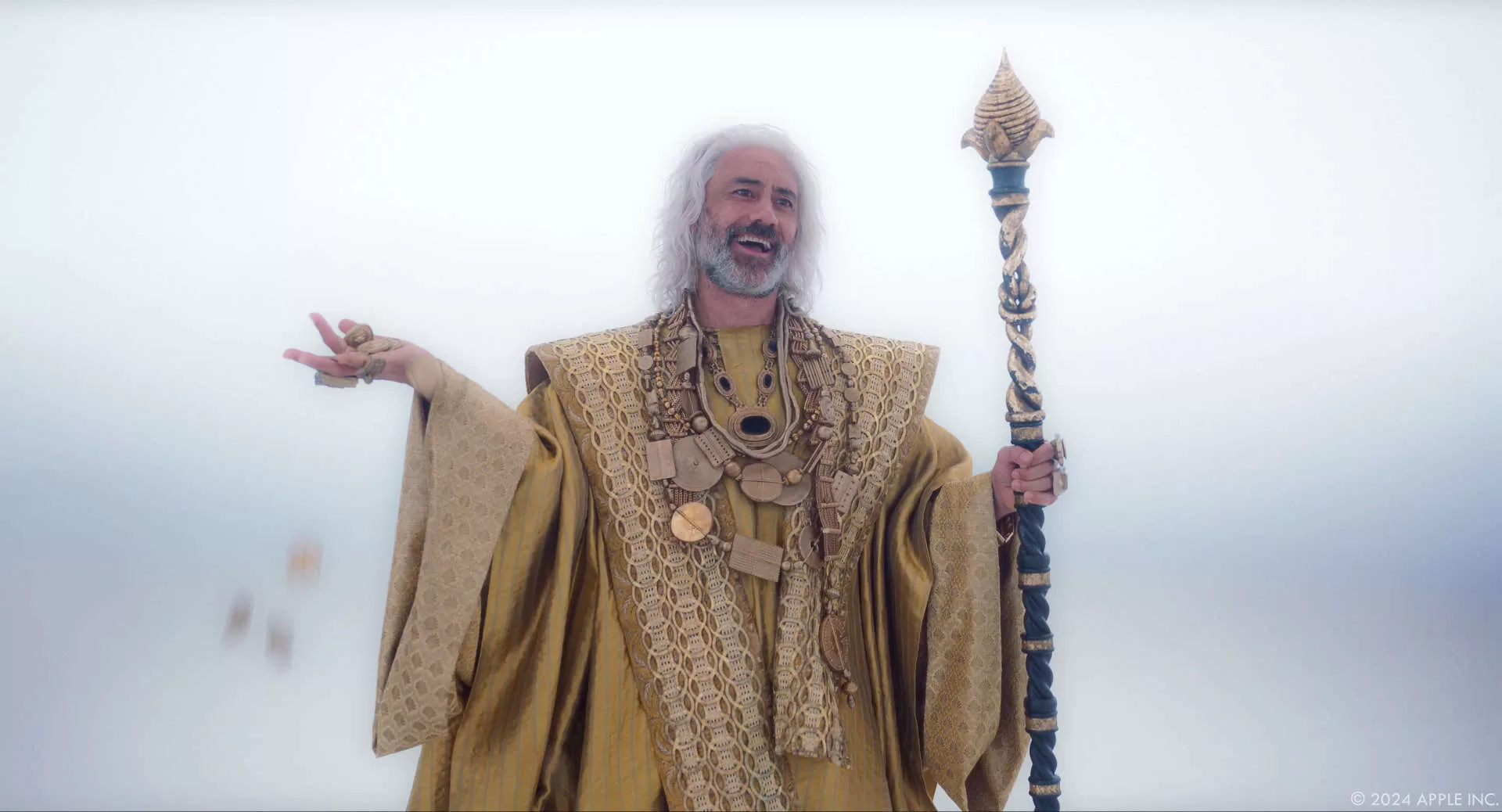
How did the team approach creating the unique environments like the Sky Citadel and the Fortress of Darkness?
Tobias Wolters // These two were probably my favourite places. They basically stand for heaven and hell. In the script the Fortress of Darkness was written as a black castle in pure darkness were lava flows uphill. But then when the Bandits visit the Time of Legends, they were scripted to be walking through a desert before approaching the fortress. So, I thought it would be a visually striking image to have the obsidian fortress of darkness sitting in the middle of a white salt desert – almost like a cancer breaking through the ground with a massive supernatural storm cell above. This created this really interesting graphic juxtapose between the super bright and very dark. When reading further about salt lakes, we came across the mirage and mirroring effect you get in these environments. This all added to a super surreal and spectacular environment. The fortress itself is based on the idea of an evergrowing stalagmite from hell. Ra Vincent built this amazing set of obsidian stalagmites and gothic architectural elements. We then added layers upon layers of staircases, arches and rock formations behind it, trying to confuse space and create this immense, never-ending Escheresque interior.
What were the biggest challenges in designing the Sky Citadel and the Fortress of Darkness?
Tobias Wolters // We were basically creating heaven and hell. These environments had to both be equally striking, awe inspiring and rich in design, yet crystal clear and not confused in convoluted detail and bad layout.
How did you ensure the Sky Citadel felt both fantastical and believable?
Tobias Wolters // The sky citadel went through so many iterations and changes until we tried something very contrary. What if you take a very soft, light, fragile environment such as a big cloud scape, and then marry it with heavy, brutalist structures made from concrete, steel and glass? That’s when it suddenly clicked. We had something new and exciting. We started by using the vertical shapes of Cumulonimbus clouds and building islands of structures around them, mirroring the flowing horizontal shapes of the clouds and steep verticals.
Were there any specific inspirations or references for the creature designs, like the giants and the mammoth?
Tobias Wolters // The mammoth was a fun one! We really used a lot of tricks there. Weta Workshop fabricated this incredible half scale mammoth costume that would be operated by 2 people on set. This was comped into aerial shots we got in the south island. We then had a full-scale buck for the upper half of the mammoth – which was on a motionbase for the actors. And then we had a full CG mammoth. The giants was quite challenging to plan and get your head around. We had many production meetings about these. In the end we prevized every shot and layed out exactly what had to be shot with whom and where.

What techniques were used to design the mythical creatures, such as the mammoth and the giants like Hen and Neptune?
Tobias Wolters // Neptune was really fun to do. Strangely his approach was quite straight forward. We shot everything on location around Wellington which got us the base plates. We had a drone on set rising up from the ocean and hovering in the air at 80m to give the actors an eye line and the camera a reference. We later shot Taika’s performance to get his facial expressions. Neptune and the water is full CG , Taika’s face is then mapped onto the CG, using the beard and hair as blend lines.
Shooting Hen was a bit trickier. We found a location that matched the description of the island, where we shot most of the Bandits performance and built the house there. We filmed the actor of Hen on a stage with phantom cameras and a lot of light. He had a miniature print of the island on his head which we then replaced with a digital scan of the filming location of the island set.
How did you create the illusion of scale for scenes featuring gigantic creatures and structures?
Tobias Wolters // For me, achieving scale is mostly about 2 things. One is camera and perspective; you always want to feel the camera struggling to capture the creature or structure in its entirety. The camera’s movement needs to be realistic. You want to feel the speed of a helicopter or crane move with the imperfections and little jitters. The other element is building in scale cues. With the giants, this came with the birds and clouds. The sky citadel had tiny windows all over the structure – and we made sure to skip any mid-scale windows.
What innovations or new techniques were introduced in the visual effects for this series?
Tobias Wolters // We actually did quite a few unique things. Apart from using virtual production or miniature elements, we also went back to classic oil paintings. I had this weird idea. I thought what if we were to film a BG plate, then build out the CG asset or city (in our case Troy and Cairo) to 60% completion, then light it. What if we then print the final frame and have a classic matte painter (Deak Ferrand) paint over this with oil. What if we then scan that painting and reproject the MP over our city asset? This got us all the parallax and we could add human sprite elements and smoke layers. It actually worked incredibly well and gave us all this wonderful detail and handcrafted feel.
We also created some new CG tools for our Smilodon fur in Episode 7. We wanted to feel the snow land in the CG fur, melt and freeze again in the tips of the fur and therefore clustering up.
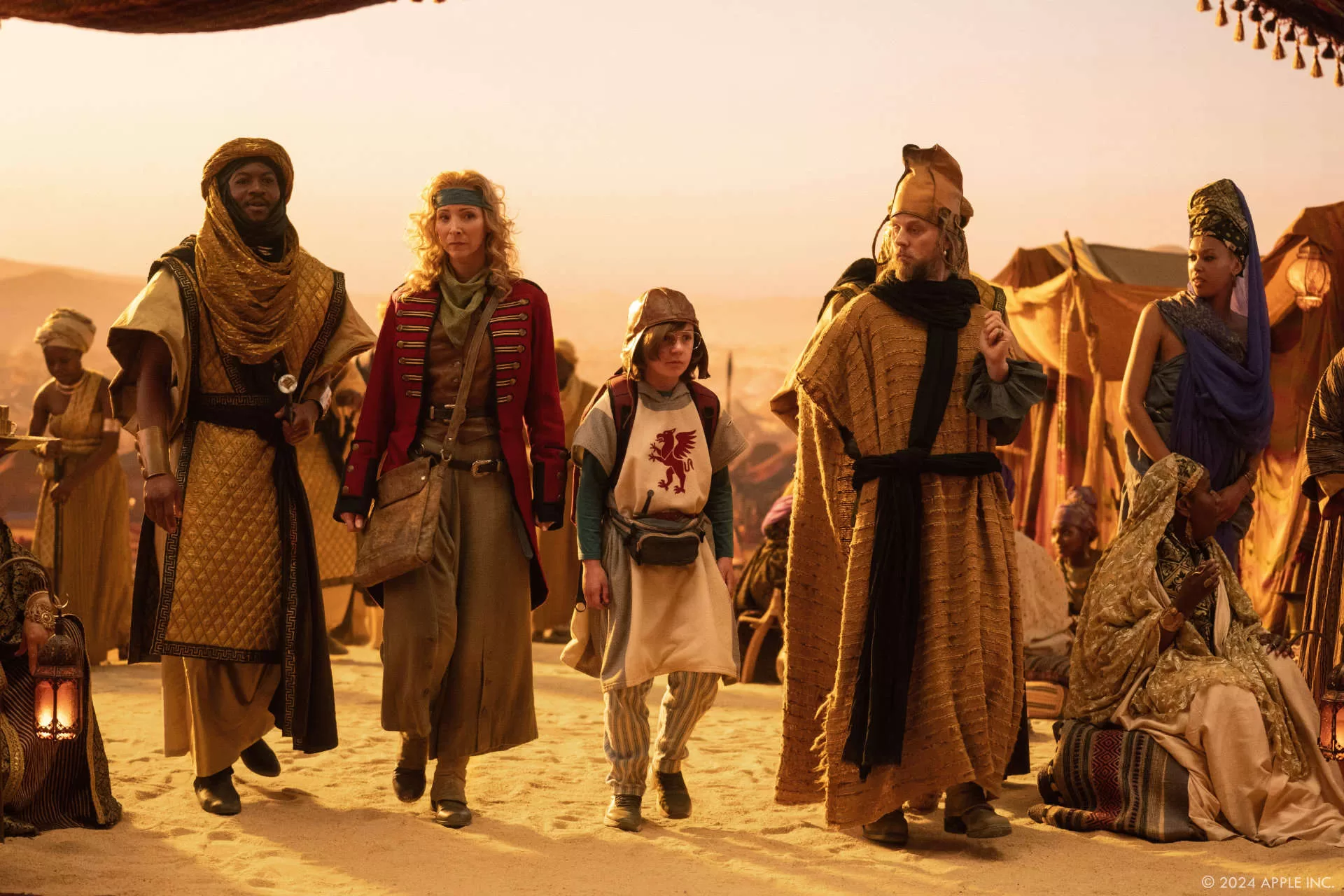
What were the most complex sequences to create in terms of visual effects?
Tobias Wolters // We had a lot of scenes that were either ambitious in design, or where we were specifically ambitious with our approach in VFX. Noteworthy are episode 7, since the entire episode is basically all VFX and filled with creatures and virtual production, the Hen sequence and the first portal in Kevin’s bedroom in episode 1.
Were there any memorable moments or scenes from the series that you found particularly rewarding or challenging to work on from a visual effects standpoint?
Tobias Wolters // To be able to use miniatures – and actually use them as they are in the final shot was very rewarding. Too often you end up replacing them with CG. I think we selected the elements carefully and had an incredibly skilled team to build and shoot them. I’m also particularly fond of the dinosaur ‘Trudy’ in episode 3. We worked on making sure she has character and a unique design that we haven’t seen before.

Looking back on the project, what aspects of the visual effects are you most proud of?
Tobias Wolters // I think I am most proud of the variety we were able to achieve. The amount of creatures and worlds to build was very daunting at the start. But the key was to make each one of them unique and rich in design and work of a lot of references. The character of Fianna was specifically challenging because it changed in post. But regardless of this, we were still able to create a very coherent design that captures all of Rachel House’s amazing performance and doesn’t come short on any level even though we had no scans, tracking markers or clean plates.
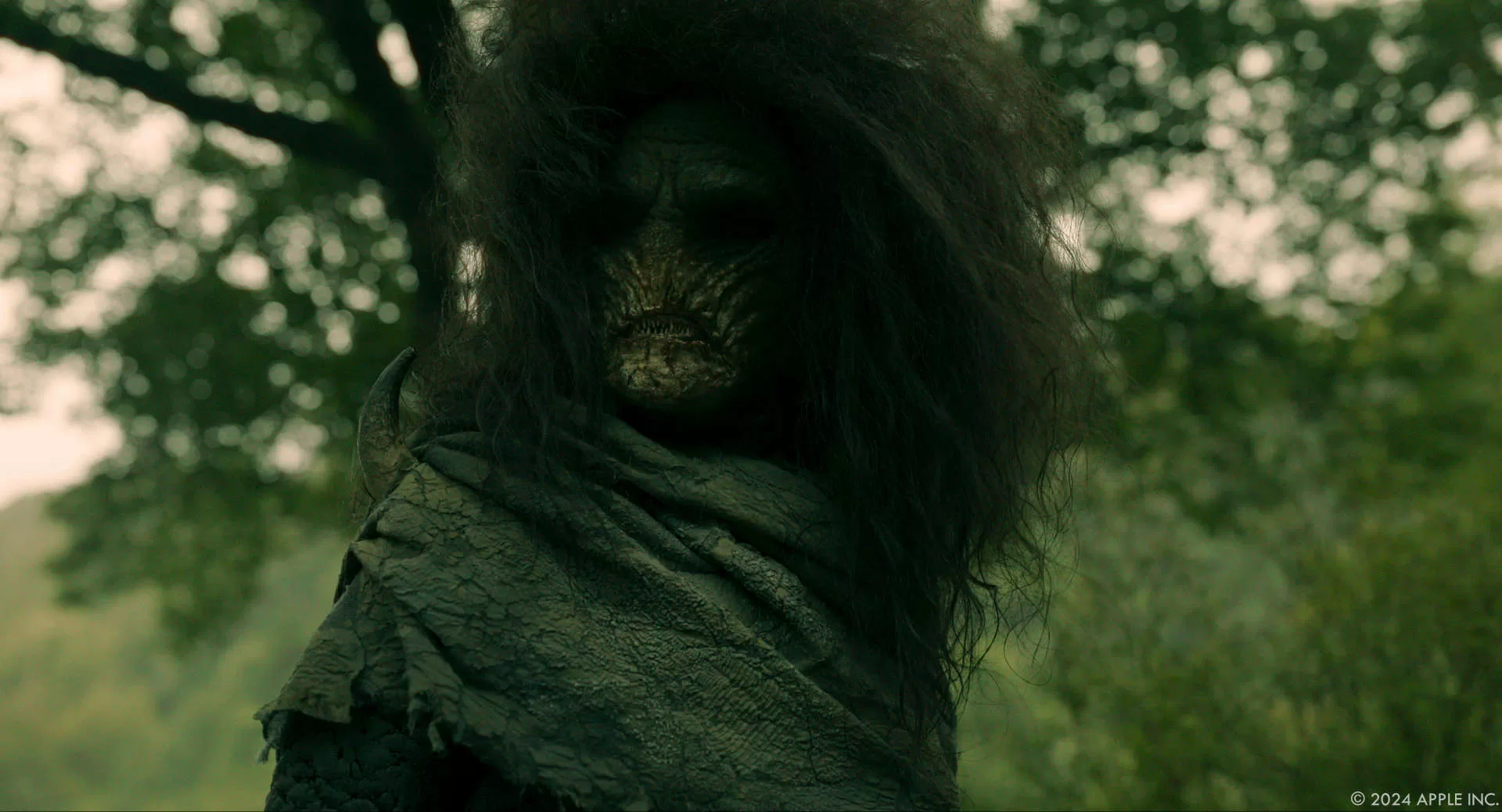
How long have you worked on this show?
Tobias Wolters // I first started in March 2022. At that point it was just Mike Berlucchi (DOP), Ra Vincent (production designer) and myself. My last day was March 2024 I think. So pretty much exactly 2 years.
What’s the VFX shots count?
Tobias Wolters // It’s a lot! I think we are not far of 5000.
What is your next project?
Tobias Wolters // We are currently deep in post-production for Taika’s next feature film. And who knows, maybe Season 2 of Time Bandits!
What are the four pieces of content (TV, film etc) that gave you the passion for cinema?
Tobias Wolters // My answer here is probably super cliche, but it was Star Wars at first. Then it was supercharged by The Lord of the Rings. It just blew my mind and wanted to know everything. I wanted to be able to achieve the same. So I started copying the shots, and made my own movies with my friends, DIY miniatures and pyrotechnics. On the TV side, it was Fringe that gave me a love for mystery and weird creatures.
A big thanks for your time.
WANT TO KNOW MORE?
Distillery VFX: Dedicated page about Time Bandits on Distillery VFX website.
DNEG: Dedicated page about Time Bandits on DNEG website.
Platige Image: Dedicated page about Time Bandits on Platige Image website.
Rodeo FX: Dedicated page about Time Bandits on Rodeo FX website.
© Vincent Frei – The Art of VFX – 2024




